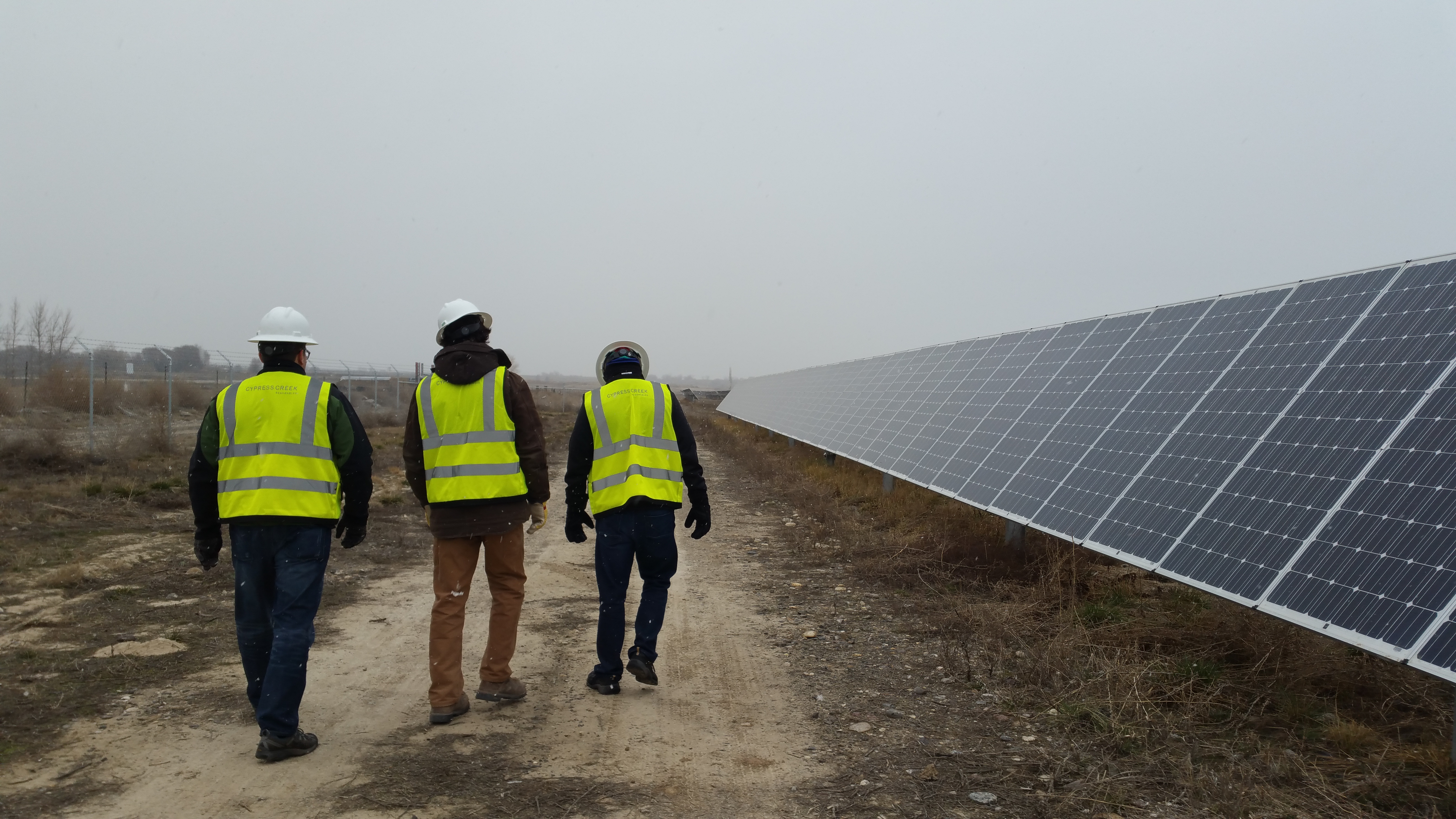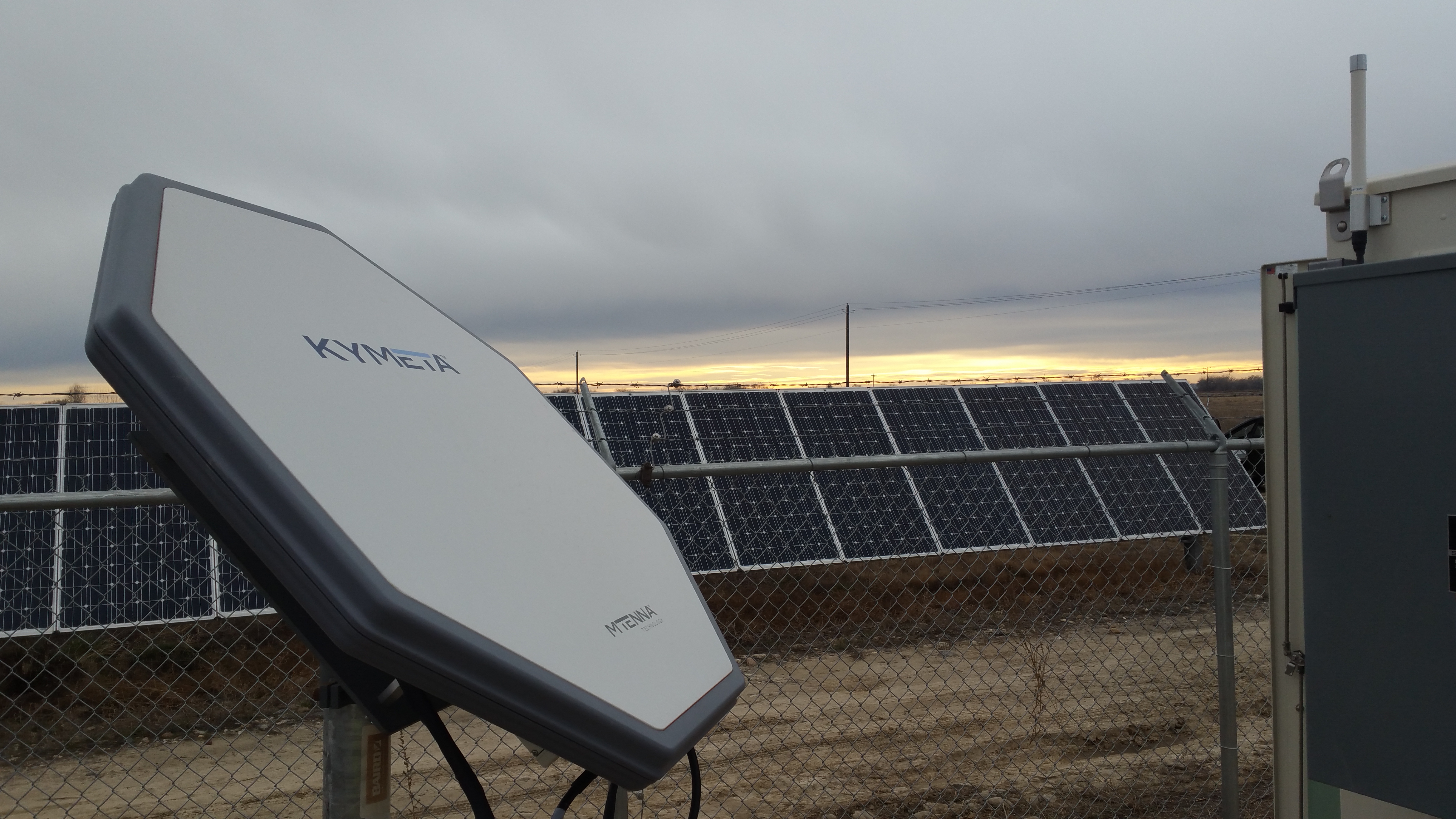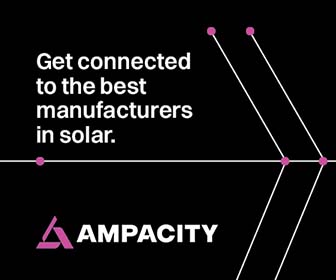Making End-to-End Remote Site Connectivity Possible: Meet the low-maintenance, high-efficiency solution
Power plant operators face difficult decisions in selecting the right communications systems. When these plants are located away from city infrastructure, direct cable access is too costly, and existing wireless solutions can also be both costly and ineffective. The Cypress Creek Renewables plant in Ontario, Oregon is a perfect example of this situation. To date, satellite has remained a nonviable solution due to cost, size, weight, difficult commissioning, etc. In this day and age, the fact that field engineers must resort to using thumb drives to transfer critical information is time consuming, inefficient, and costly. They should be able to maintain and monitor facilities remotely.
Current satellite solutions deployed by plant operators use fixed dishes that are precisely pointed directly at the satellite. During  inclement weather, which is frequent in remote locations such as the Cypress Creek plant, wind occasionally blows the fixed dish out of alignment with the satellite. As a result, a highly trained satellite technician must come out to repoint the dish. Not surprisingly, remote locations report they experience many outages per year. Where field callouts should be reserved for necessary equipment maintenance, companies find their bottom line being eaten away by callouts that are mostly dedicated to bringing communications back online. Additionally, the utility offtaker consistently loses visibility into the asset, raising data reliability and safety concerns. Slow and spotty communications at best, coupled with uncontrollable variables such as weather and environmental challenges, pose a high risk of closing down the plants altogether. The renewable energy industry must have a better alternative.
inclement weather, which is frequent in remote locations such as the Cypress Creek plant, wind occasionally blows the fixed dish out of alignment with the satellite. As a result, a highly trained satellite technician must come out to repoint the dish. Not surprisingly, remote locations report they experience many outages per year. Where field callouts should be reserved for necessary equipment maintenance, companies find their bottom line being eaten away by callouts that are mostly dedicated to bringing communications back online. Additionally, the utility offtaker consistently loses visibility into the asset, raising data reliability and safety concerns. Slow and spotty communications at best, coupled with uncontrollable variables such as weather and environmental challenges, pose a high risk of closing down the plants altogether. The renewable energy industry must have a better alternative.
Obstacles
For plant owners, the travel time to a remote destination with an installation crew can be extremely costly. These legacy systems require precise pointing to the satellite in order to get and maintain a connection. Additionally, the environment itself can block communications; wind and other poor weather conditions, which are inherent in more barren remote locations, invariably cause loss of signal. This frequent signal loss interferes with the accuracy of asset monitoring and reliability. Historically, data issues caused by environmental phenomenon (such as rain fade) are the result of significant latency and packet loss. These results are typical of slow satellite transmit speeds, which then cause receiving terminals to time out and lose data.
The time and cost to deal with a thousand or more outages per year is neither sustainable nor affordable for any operation. Every time connectivity is lost, communication to the plant owner and the utility company shuts down. Consequently, plant operators report that this level of operational maintenance has become their only job.

Future Proofing
Satellite solutions rely on geostationary earth orbit (GEO) satellites. In less than two years, however, several low earth orbit (LEO) satellite constellations will come online. These new constellations will offer higher performance and significantly lower latency than their GEO predecessors. Unlike GEOs, LEOs will move from horizon to horizon in mere minutes, necessitating new terminals to track the fast-moving satellites. Terminals will also need to have instantaneous switching capabilities to ensure uninterrupted connectivity. As the satellite that the terminal is linked with moves out of view, the terminal will need to form a new beam to catch the next satellite as it comes into view. This switch from disappearing satellite to appearing satellite will need to happen within milliseconds to avoid dropped connections and service interruptions.
The renewable energy industry will consistently seek efficiencies through technological improvements that minimize time and costs incurred in maintaining power energy plants, many of which are increasingly found in remote locations. Operators demand instant results. Their priorities are to reduce overall field call outs to the site, so that their plant technicians can focus on maintaining maximum uptime, not communications failures.
Satellite services provider FMC GlobalSat understands that the more self-operational plants become, the lower the cost of plant ownership. Alleviating physical challenges and improving self-correcting satellite connectivity is a major goal, not only its client for Cypress Creek Renewables, but every power plant looking to boost productivity. Environmental challenges are inherent to our business. Emerging technologies such as a high-performing managed network coupled with steady, reliable, weather-resistant satellite antenna technology, will translate into huge growth potential for the industry.
 Steve Sybeldon is VP of Business Development and Sales at Kymeta. He is responsible for promoting Kymeta communications solutions to Land Mobile, Maritime, and Fixed location markets. Steve is a cellular industry veteran with 20 combined years at MCI, McCaw Communications, and AT&T Wireless. In 2005, he transitioned to the satellite industry to deliver cellular services within the maritime industry by way of satellite link.
Steve Sybeldon is VP of Business Development and Sales at Kymeta. He is responsible for promoting Kymeta communications solutions to Land Mobile, Maritime, and Fixed location markets. Steve is a cellular industry veteran with 20 combined years at MCI, McCaw Communications, and AT&T Wireless. In 2005, he transitioned to the satellite industry to deliver cellular services within the maritime industry by way of satellite link.
Kymeta | www.kymetacorp.com
Volume: 2018 July/August











.png?r=3340)
